[social_warfare]
The Pangolin is a creature that looks like it wandered out of a medieval fantasy, complete with its own suit of armor.
What is the Pangolin?
Picture this: a creature that could pass as the love child of an anteater and a pinecone. That, my friend, is a pangolin. These solitary, primarily nocturnal mammals are the only ones in the animal kingdom rocking a full coat of keratin scales. Yes, the same stuff your hair and nails are made of.
Pangolins are like the conservation world’s rock stars, playing an essential role in controlling insect populations and thus, maintaining the balance of their ecosystems. But, here’s the kicker – they’re also among the most trafficked mammals in the world. Why? Their scales and meat are in high demand in certain parts of the world for traditional medicine and exotic cuisine. Not cool, humanity. Not cool.
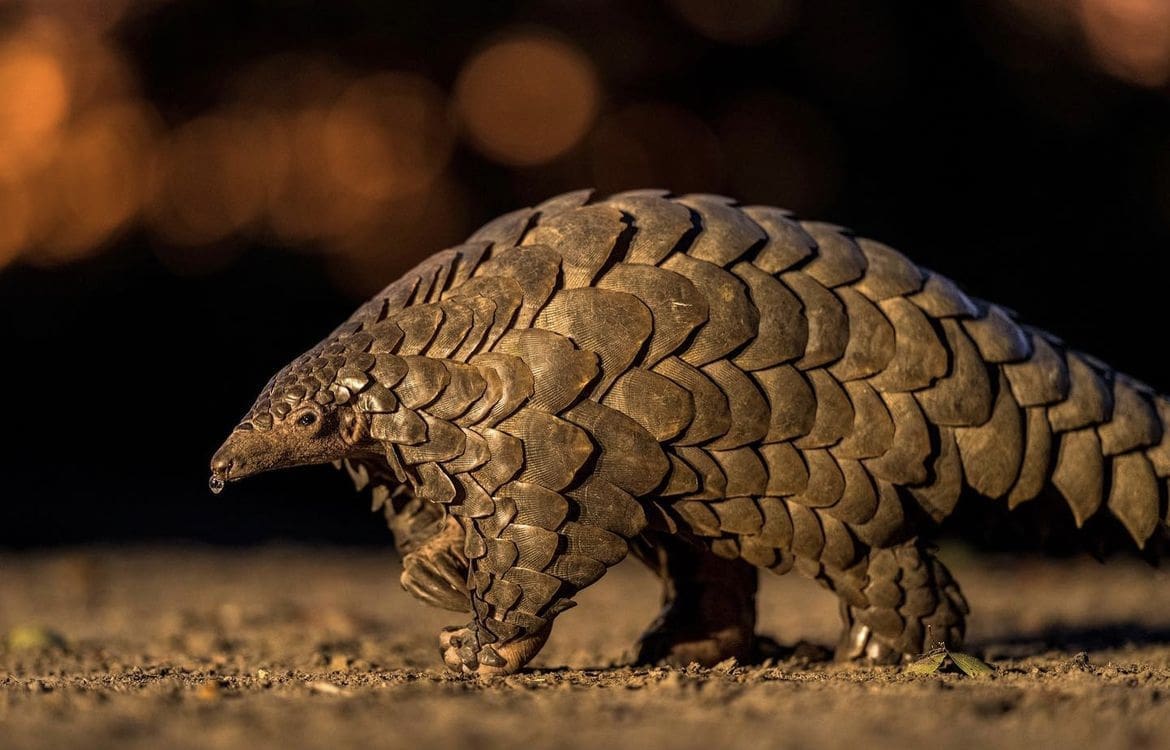
What Do Pangolins Look Like?
Okay, let’s paint a picture of our scaly friend. Pangolins come in eight different flavors – I mean, species – and they range in size from a small house cat to over a meter long. Their most striking feature is, without doubt, their scales, which cover pretty much their entire body except for the soft underbelly. Imagine wearing a coat of armor 24/7; that’s the pangolin lifestyle.
They’ve got these long, sticky tongues, perfect for slurping up ants and termites, their food of choice. No need for utensils in the pangolin world. And those claws? Built for digging into ant hills and tearing into termite mounds. They’re like the ultimate survivors, equipped with everything they need to thrive. Well, except for defenses against humans, but more on that later.
How Big Are Pangolins?
Size-wise, pangolins are a diverse bunch. The smallest of the gang, the African tree pangolin, can curl up into a ball small enough to fit into your arms – if it let you hold it, which it won’t because, you know, wild animal and all. On the other end of the spectrum, you’ve got the giant pangolin, tipping the scales at over 30 kilograms (that’s about 66 pounds for those of us not using the metric system).
Length-wise, including their tails, they can stretch out to about 1.2 meters (almost 4 feet). That’s a lot of pangolin to love. Speaking of their tails, some species have prehensile ones, meaning they can grab onto branches and hang out in trees. Yeah, pangolins could give any acrobat a run for their money with their tail skills.
Pangolin Skin: Nature’s Armor
So, about those scales. Pangolin skin is a marvel of nature, a literal suit of armor that protects them from the clutches of predators. These scales are made of keratin, the same stuff your hair and nails are made of, but on steroids.
When threatened, a pangolin can roll into a nearly impenetrable ball, leaving predators puzzled and possibly nursing a broken tooth. But here’s the catch – this incredible defense mechanism is also their Achilles’ heel. Poachers can easily scoop up the balled-up pangolin, making them vulnerable to illegal wildlife trade. It’s like having a superpower that’s also your biggest weakness.

Pangolin Tail: Not Just for Looks
Moving on to another peculiar feature – the pangolin tail. This isn’t just your average tail; it’s a multi-tool. For tree-dwelling species, the tail acts as an extra limb, allowing them to hang onto branches with ease.
Imagine having a built-in grappling hook. Ground-dwelling species use their tails for balance and, in some cases, as a weapon of sorts, swiping at anything that threatens them. The tail is also a protective tool, covering their faces when they’re rolled up. Talk about versatile!
Colouration
Now, let’s talk color. Pangolin colouration is all about blending in. These creatures aren’t hitting the runway with flashy hues; they’re more about that understated, earth-toned elegance. Their colors range from light sandy shades to dark browns, perfectly matching their environments, whether it’s the forest floor or the savannah.
This natural camouflage helps them avoid predators and, when combined with their nocturnal nature, makes them the ninjas of the animal world. Stealth mode: activated.
What Do Pangolins Eat?
When it comes to dining, pangolins could be considered the gourmets of the insect world. Their menu primarily consists of ants and termites, making them nature’s pest controllers. With their long, sticky tongues, which can be longer than their bodies, they slurp up insects like they’re sipping on the world’s smallest, bug-filled milkshakes.
This diet is so specialized that pangolins lack teeth. Who needs teeth when you’ve got a tongue capable of hijacking ants from their homes? It’s a tough job, but someone’s got to do it, and pangolins do it with gusto.

Pangolin Social Structure
“Social” might be a bit of an overstatement when it comes to pangolin gatherings. These creatures are the introverts of the animal kingdom, preferring solitude to the hustle and bustle of social life. They meet with their fellow pangolins basically only when it’s time to make more pangolins. Even then, it’s a pretty low-key affair.
Female pangolins are the ones who set up a home for their offspring, raising them with minimal input from the dads. Baby pangolins, also known as pangopups (okay, I made that up, but it should be a thing), ride on their mother’s tail for the first few months of their life. If that’s not the epitome of hitching a ride, I don’t know what is.
How Do Pangolins Reproduce?
Speaking of making more pangolins, their reproduction process is as unique as they are. Most species give birth to just one pangopup per year, after a gestation period that can vary from 70 to 140 days, depending on the species. These mini armored critters are born soft and vulnerable, relying entirely on their mother’s protection.
The scales harden after a couple of days, gearing them up for the tough world outside. Mama pangolins are dedicated, nurturing their young in burrows and carrying them on their backs until they’re ready to venture out on their own. It’s a tough love world out there, but pangolin moms are up to the task.
How Long Do Pangolins Live?
Ever wondered about the lifespan of these scaly critters? In the wild, pangolins can live up to 20 years, though it’s a tough journey filled with dangers, both natural and man-made. In captivity, where threats are minimized, they can reach similar ages, but only if their unique dietary and environmental needs are meticulously met.
It’s a testament to their resilience, navigating a world that’s increasingly hostile. Yet, this longevity also speaks volumes of their struggle, with many not reaching their full lifespan due to poaching and habitat loss.
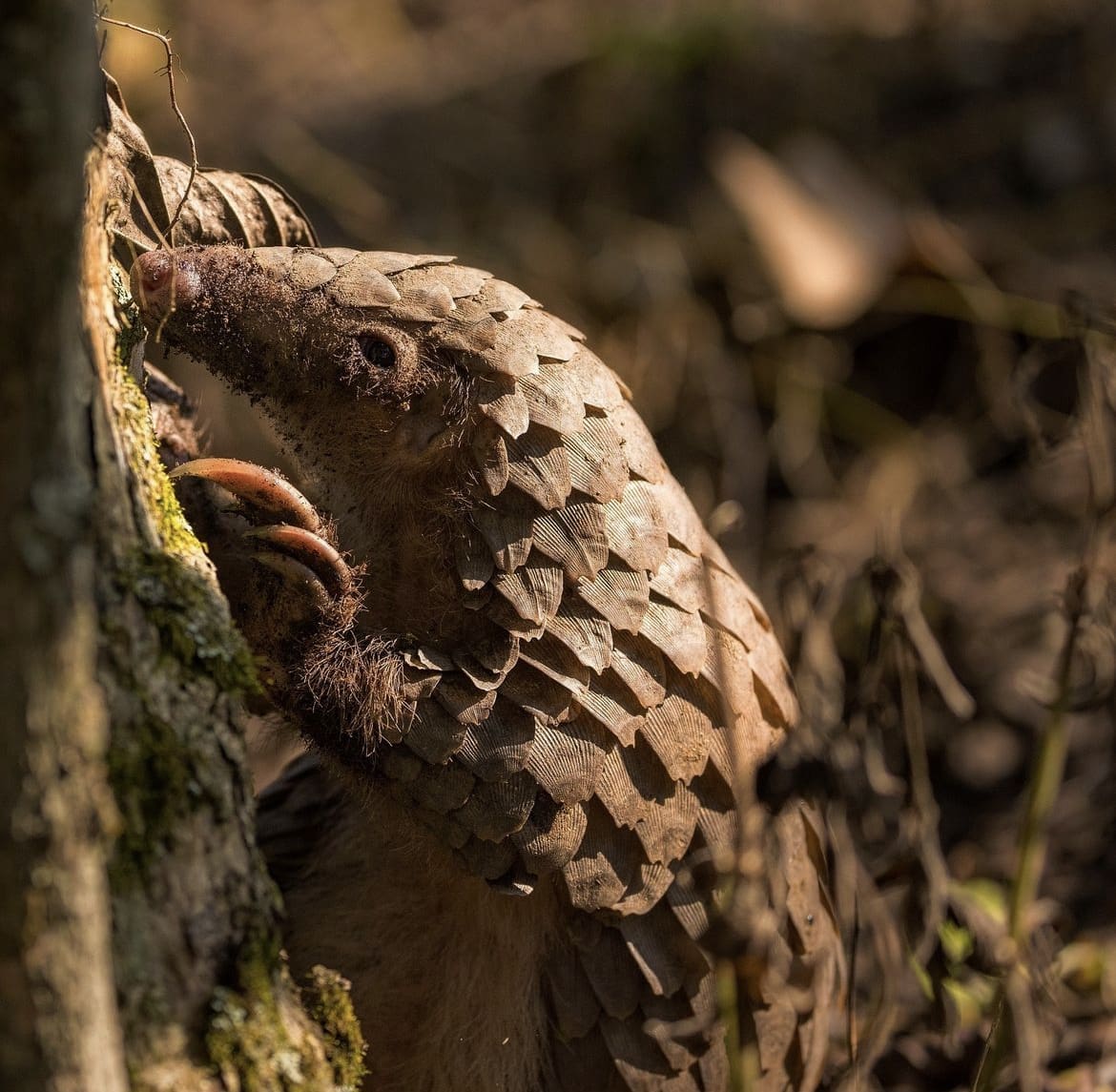
Are Pangolins Aggressive?
If you’re picturing a fierce, scale-armored beast ready to throw down at a moment’s notice, you might be a bit off the mark. Pangolins are the pacifists of the animal kingdom. They’re about as aggressive as a loaf of bread.
When threatened, their go-to move isn’t to attack but to curl up into a tight, scaly ball – a natural fortress that keeps them safe from most predators. It’s an effective defense mechanism against natural threats, but, sadly, it does little to protect them from the biggest threat of all: humans.
Are Pangolins Territorial?
Pangolins, those solitary wanderers, aren’t known to throw block parties. They prefer the quiet life, with each adult claiming its own patch of the wild. They’re not the type to engage in turf wars; their territories may overlap, and they maintain a sort of “live and let live” policy.
Males might have larger territories that overlap with those of several females, primarily for breeding purposes, but there’s little of the possessive squabbling seen in more territorial species. It’s as if they understand the value of personal space in a way that would make any introvert proud.
How Fast Are Pangolins?
If you’re imagining a pangolin sprinting at breakneck speeds, you might want to adjust your expectations. These creatures aren’t built for the fast lane. On the ground, they adopt an awkward, waddling gait due to their clawed feet, which are more suited for digging than running. However, when necessary, they can hustle to a safe spot or away from a predator, albeit not very swiftly.
Tree-dwelling pangolins show more agility, using their prehensile tails and clawed feet to navigate the branches with a grace that belies their cumbersome appearance on land. Speed, for pangolins, is less about velocity and more about stealth and survival.
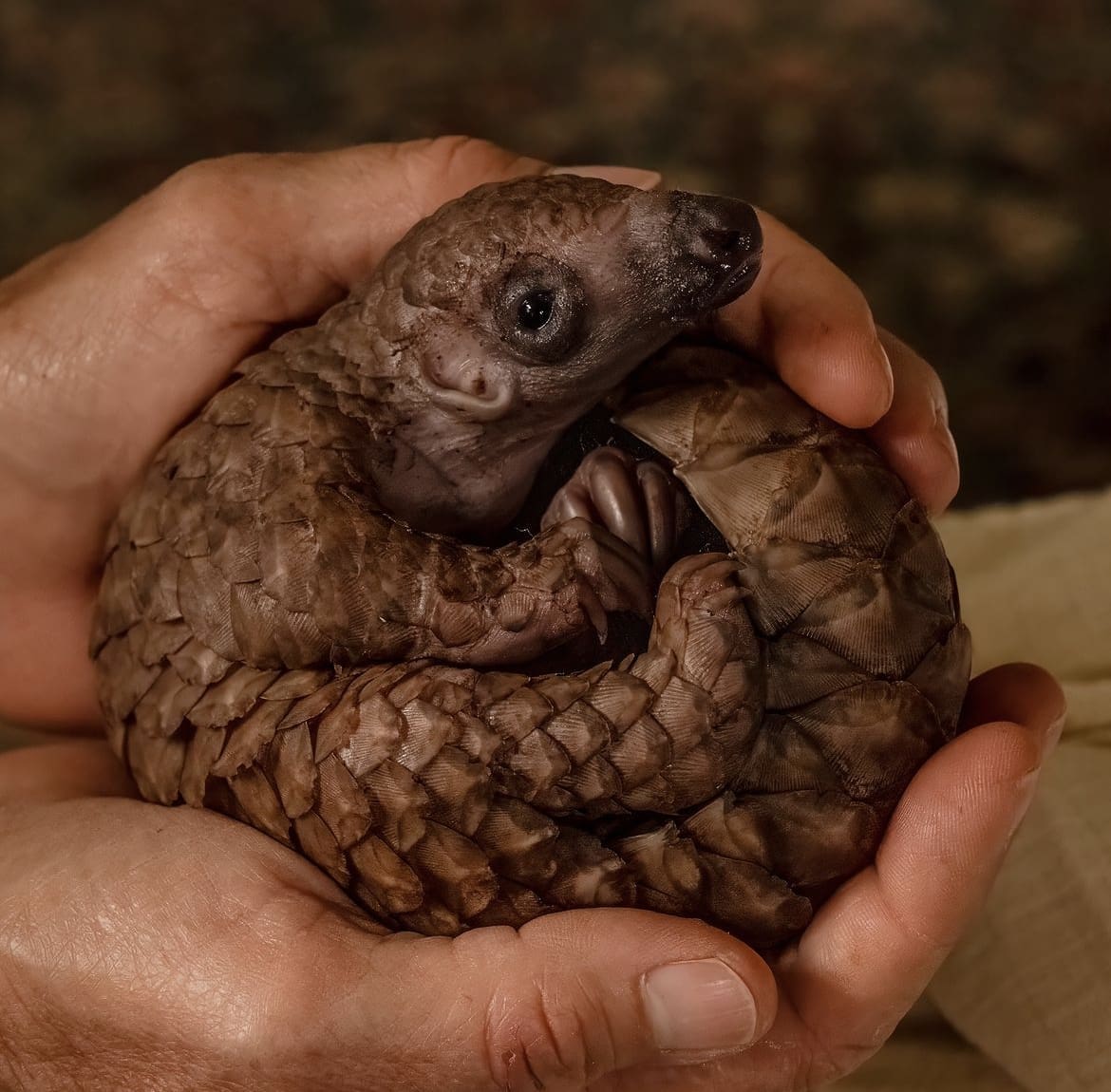
Where Do Pangolins Live?
Pangolins have made their homes in a variety of environments across Asia and Africa, showcasing their adaptability. From the dense forests and savannas of Africa to the tropical landscapes of Asia, they occupy a range of habitats that offer ample supplies of their favorite snacks: ants and termites.
The specific habitat preferences can vary among the eight species, with some favoring the dense canopy of rainforests while others thrive in grasslands or even agricultural areas. This versatility, however, is double-edged, as it exposes them to a variety of human threats, from deforestation and habitat destruction to poaching for illegal wildlife trade.
How Many Pangolins Are There in the Wild?
Here’s where the conversation takes a sobering turn. The exact number of pangolins in the wild is a mystery, shrouded by their secretive nature and the vast, often inaccessible areas they inhabit.
However, what’s not a mystery is their alarming decline. All eight species of pangolins are threatened with extinction to varying degrees, according to the International Union for Conservation of Nature (IUCN). The lack of precise population data complicates conservation efforts, making it challenging to track their numbers and the effectiveness of protection measures.
This uncertainty highlights the critical need for increased research, monitoring, and community engagement in pangolin conservation.
Are Pangolins Endangered?
The straightforward answer is, sadly, yes. Pangolins are among the most endangered animals in the world, primarily due to two significant threats: wildlife trafficking and habitat destruction. All eight species of pangolins are protected under international law, with trade prohibited by the Convention on International Trade in Endangered Species (CITES).
Despite this, illegal trafficking persists, driven by demand for their scales in traditional medicine and their meat as a delicacy in certain cultures. Habitat loss further exacerbates their decline, as expanding agriculture, deforestation, and urbanization encroach on their natural environments. The pangolin’s story is a glaring example of the biodiversity crisis, underscoring the urgent need for global conservation efforts.
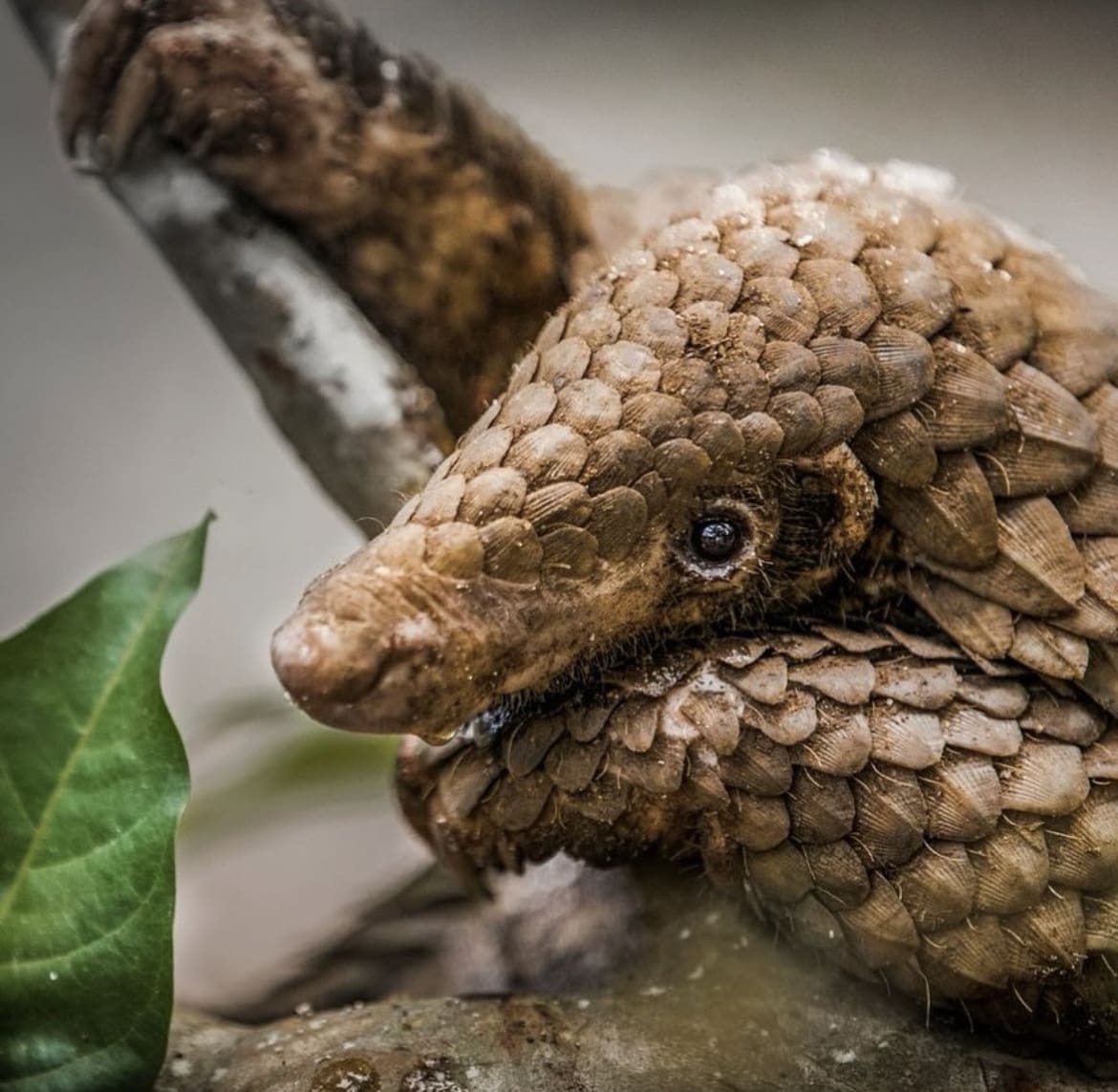
Threats to Pangolins in the Wild
Digging deeper into the perils pangolins face, wildlife trafficking stands out as the most dire. Believed to possess medicinal properties, their scales have become a commodity on the black market, fueling a shadowy trade that spans continents. Additionally, their meat is considered a luxury in some regions, adding to the pressures on their dwindling populations.
Beyond the clutches of poachers, pangolins also grapple with the loss of their natural habitats. As humans push further into their territories, the spaces where pangolins can live and hunt diminish, leaving them vulnerable to starvation and conflict with human interests.
Where to See Pangolins in the Wild
In the face of these challenges, there are still bastions of hope where pangolins continue to thrive, offering rare opportunities for wildlife enthusiasts to witness these creatures in their natural settings. National parks and protected reserves across Africa and Asia serve as sanctuaries, providing a glimpse into the world of pangolins.
Countries like South Africa, Tanzania, and Vietnam have become hotspots for pangolin sightings, particularly in areas where conservation efforts are robust. Eco-tours and wildlife safaris in these regions often promote responsible observation of pangolins, contributing to their protection by raising awareness and generating funds for conservation projects. Witnessing a pangolin in the wild is an unforgettable experience, a reminder of the beauty and fragility of the natural world.
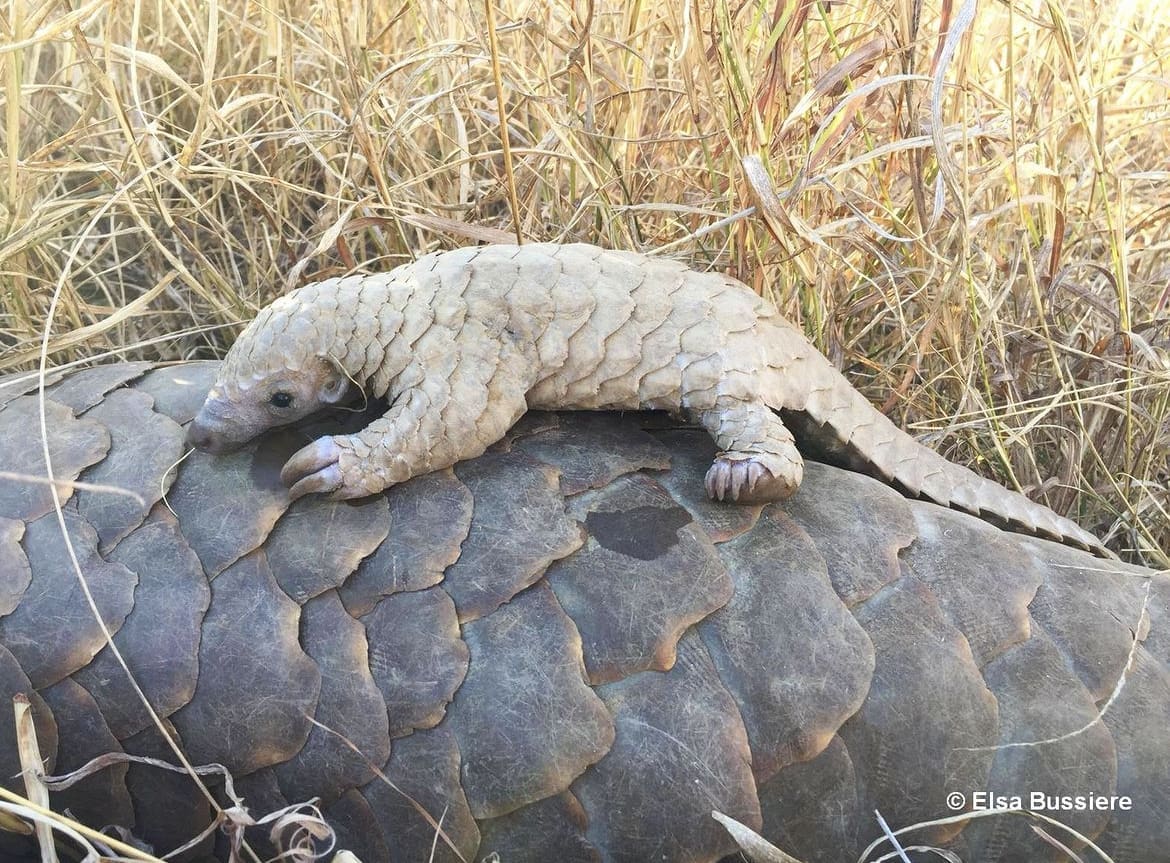
Tips for Spotting Pangolins in the Wild
Spotting a pangolin in its natural habitat requires patience, respect for nature, and a bit of luck. Here are a few tips for those hoping to catch a glimpse:
- Go on guided tours: Opt for eco-tours or safaris led by experienced guides in regions known for pangolin sightings. These professionals are knowledgeable about pangolin habits and habitats.
- Be nocturnal: Since pangolins are primarily nocturnal, consider night safaris or tours that offer the chance to see these creatures when they’re most active.
- Stay quiet and respectful: Loud noises can scare pangolins away. Move quietly and maintain a respectful distance to increase your chances of a sighting.
- Support conservation efforts: Choose tours and activities that contribute to conservation efforts. Your visit can make a difference in protecting pangolins and their habitats.
Facts about The Pangolin
Prepare to be amazed by these pangolin particulars:
- Built-in defense mechanism: When threatened, pangolins can roll into an almost impenetrable ball, effectively protecting themselves from predators.
- Long tongues: A pangolin’s tongue can extend up to 40cm, longer than its body, and is stored in a cavity near its pelvis when not in use.
- Unique scales: Pangolins are the only mammals wholly covered in scales, accounting for about 20% of their body weight.
- Environmental impact: By feasting on insects, pangolins play a crucial role in pest control, indirectly supporting agriculture and ecosystem balance.
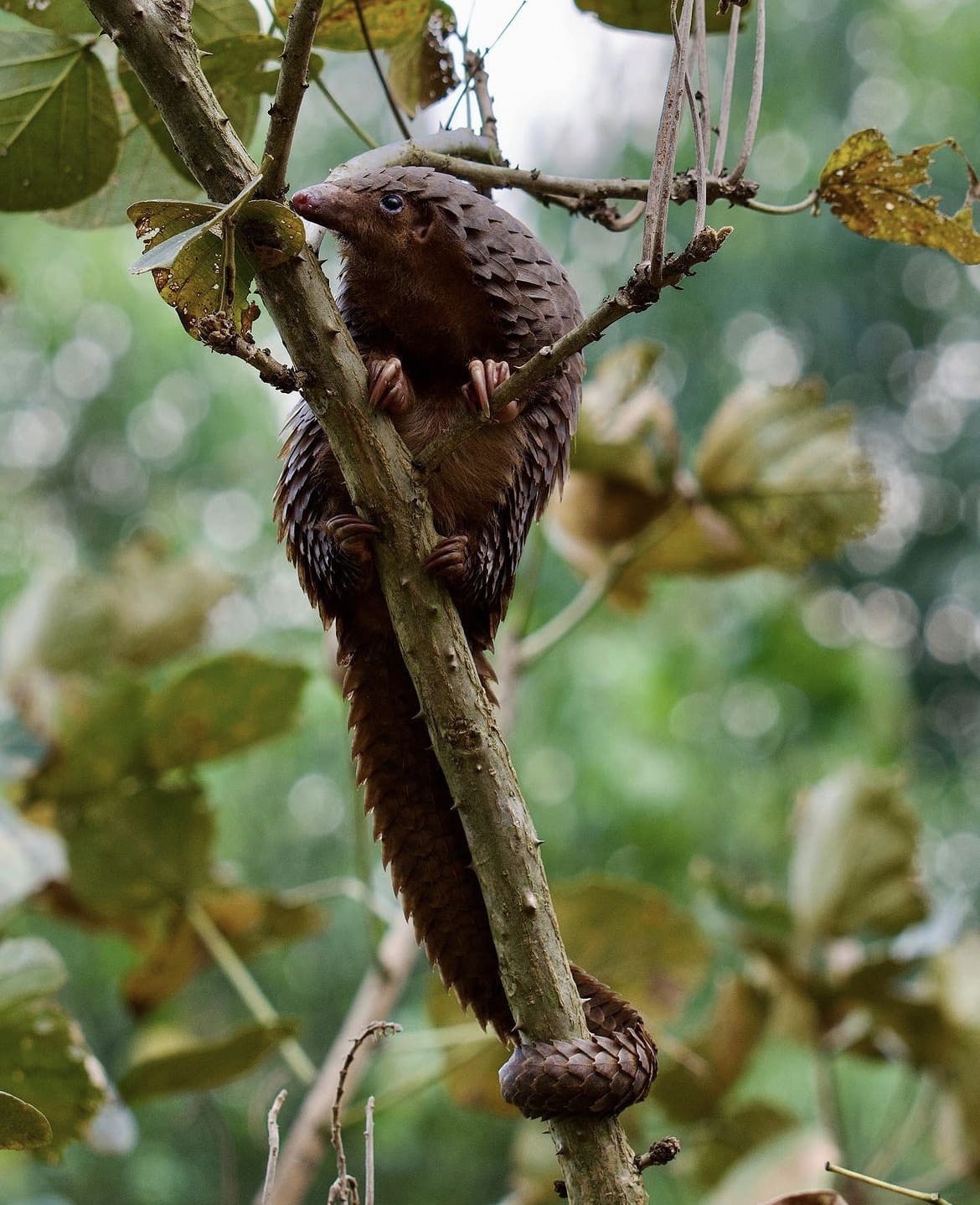
Myths about The Pangolin
Let’s set the record straight on some common misconceptions:
- Medicinal scales: Contrary to popular belief, pangolin scales, made of keratin, have no proven medicinal properties, similar to human hair and fingernails.
- Pangolins as pets: While they may look unique and intriguing, pangolins are wild animals that do not thrive in domestic settings and are illegal to own in many places.
- Aggressive creatures: Despite their appearance, pangolins are not aggressive and pose no threat to humans. Their primary defense mechanism is to roll up into a ball, not attack.
